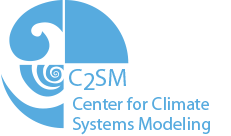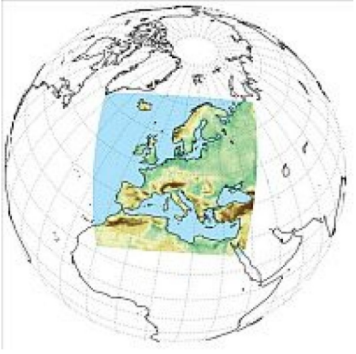C2SM Newsletter vol. 33

Topics in this Newsletter – November 2021
- News from the C2SM Core Team
- Modelling Activities and Services
- News from EXCLAIM
- News from joint activities on climate scenarios
- News from the C2SM Community
- Selected press articles
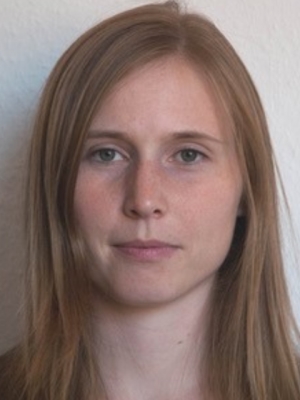
We welcome Dr. Annika Lauber to the C2SM core team as our new scientific programmer in the area high performance computing and technical model development. She did her PhD on the topic of in-situ observations of ice multiplication in clouds using a holographic imager and a deep learning algorithm for the classification of cloud particles with C2SM member Ulrike Lohmann and C2SM community member Jan Henneberger. Annika brings a comprehensive background in atmospheric science and a passion for coding that she intends to expand upon at C2SM. We are looking forward to her assistance and member support.
Ruth Lorenz is on maternity leave. We congratulate her to her new family member Jonah Laurin! Ruth will be back at C2SM in April 2022. Until then, some of the work in WG 3 and all of WG 4 is halted. In the meantime, to further proceed on the new Swiss climate scenarios to be published in 2025, we have successfully hired an intern to analyse and assess to what extent the CMIP6 ensemble of global climate simulations compares to the previous CMIP5 ensemble in terms of climate change signals over Central Europe and the Greater Alpine Region. This is Maximilian Gorfer who holds a Master in Environmental System Sciences from the University of Graz in Austria.
Modelling Activities and Services
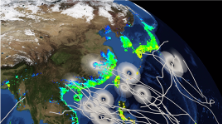
Working Group 1 (WG 1): High Performance Computing
C2SM activities in WG1 focused on optimising the turbulence and surface schemes for the application of graphics processing units (GPU) in the weather and climate model ICON. In close collaboration with MeteoSwiss major bottlenecks were identified and rewritten in a way to run the schemes more efficiently. Nevertheless, these two parameterisations still have substantial performance issues, most likely introduced by the tile-approach that was not present in the COSMO code.
Working Group 2 (WG 2): Development of Weather and Climate Models
In order to find optimal climate model setups on high-performance computing (HPC) architectures, it is desired to analyse their scaling capabilities, i.e., to calculate the runtime efficiency with an increasing number of processors / nodes. Such a scaling analysis has been performed for a set of models (ECHAM, ICON, and ICON-HAM) with different climate run setups. It could be shown that there is a very good scalability for all those models. In particular at a horizontal resolution of 5 km, the GPU version of ICON is capable of global climate runs on the Piz Daint machine at the Swiss Supercomputing Centre CSCS.
Besides the model runs itself themselves, preparing the necessary input data (preprocessing) and analysing the output data (post-processing) is very time-consuming. C2SM now provides a script that simplifies and automates these processing steps. While it has already been available for COSMO and ICON without extensions, it has now been extended to be compatible with the ART („Aerosols and Reactive Trace Gases”) module of ICON.
Another highlight in WG2 was the successful transition to a newer compiler for ICON on the Euler cluster. C2SM ICON users can now fully benefit from the large number of Euler7 nodes for their simulations.
Working Group 3 (WG 3): Climate Scenarios
In working group 3, new scenario runs from EURO-CORDEX, the European branch of the international CORDEX initiative, which have become available since the CH2018 report, have been added to the data base. This results in an increase of available model runs by a factor of 2 to 5 depending on the emissions scenario. The new climate model runs have been evaluated and analysed; so far the new results are broadly consistent with the CH2018 report. For details, see the article on “Increase in the number of newly available EURO-CORDEX simulations” below.
Working Group 4 (WG 4): Climate Impacts
The topic of climate impacts has newly been started at the Extradepartmental Center C2SM. So far, work has mostly focused on determining the needs of the climate impacts community and how C2SM support can be most beneficial to climate impacts researchers. At a special WG4 meeting in September this year, four main needs have crystallised: a need for standardised, documented data sets with easy access, a contact person available to answer questions on data sets, tools and/or advice for model selection, and regular meetings to build the group further and share information. The meeting minutes are available to C2SM community members at the C2SM intranet.
The Extreme scale computing and data platform for cloud-resolving weather and climate modeling (EXCLAIM) project aims to develop an ICON-model based infrastructure that is capable of running kilometre-scale climate simulations at both regional and global scales.
The following articles provide insight into the project activities and overarching goals:
- New, high-resolution models merge weather and climate, ETH News, 6.8.2021
- Why do we need sharper weather and climate models?, ETH Zukunftsblog, 6.8.2021
- external pageEine neue Generation von Wetter- und Klimamodellencall_made, MeteoSwiss-Blog, 6.8.2021
- external pageDiese Klimamodelle – wie funktionieren die eigentlich genau? Eine Annäherungcall_made, NZZ, 12.11.2021
We are hiring! EXCLAIM is looking for talented and motivated software engineers/programmers and two postdocs in urban modeling and atmospheric turbulence over complex topography.
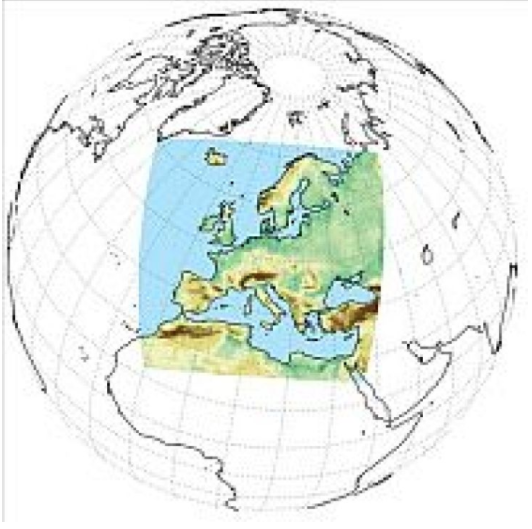
EURO-CORDEX Climate Scenario
EURO-CORDEX is the European branch of the international CORDEX initiative, which is a program sponsored by the World Climate Research Program (WRCP) to organise an internationally coordinated framework to produce improved regional climate change projections for all land regions world-wide. CORDEX results serve as input for climate change impact and adaptation studies in the frame of the Fifth and the Sixth Assessment Report (AR5, AR6) of the Intergovernmental Panel on Climate Change (IPCC). Among others, the CH2018 Climate Scenarios for Switzerland rely on the EURO-CORDEX simulation database.
Increase in the number of newly available EURO-CORDEX simulations.
The number of EURO-CORDEX simulations has substantially increased during the last years. A large fraction of the new simulations has been produced within the EU project PRINCIPLES (“Producing RegIoNal ClImate Projections Leading to European Services”), with a major contribution from the Climate and Water Cycle group at the Institute for Atmospheric and Climate Science (IAC) at ETH.
Within Working Group 3 (Climate Scenarios) of C2SM, CORDEX data is systematically processed, quality-checked, and standardised to be used for climate scenario analyses and applications. Compared to the status at the time of the CH2018 climate scenarios, the amount of simulations has massively increased. For example, for the RCP8.5 (strong emission) scenario the number of simulations has increased from 21 to more than 90. C2SM, the Climate Evolution group at MeteoSwiss, and the Climate and Water Cycle Group at IAC have collaboratively analysed the new set of simulations to prove consistencies across - and to spot potential differences between - the extended new ensemble and the reduced CH2018 sub-set of the ensemble. While an in-depth analysis covering complex diagnostics remains open, for very basic indicators (i.e. seasonal mean temperature and precipitation changes) the reduced CH2018 ensemble already covers the range of potential climate change signals as represented by the extended new ensemble. In turn, the extended ensemble now provides a more robust estimate of potential future climate change. The consistency between the reduced and the extended EURO-CORDEX ensemble will thus guide the way to designing an updated generation of Swiss climate scenarios. Rather than simply extending the underlying EURO-CORDEX simulation database, the upcoming scenario generation will focus on the exploitation of new model generations to bridge existing knowledge-gaps, i.e., by using convection permitting model output to address hourly time-scales and extreme events. Current efforts at C2SM and MeteoSwiss are also devoted to exploring and comparing old and new generations of global climate projections (i.e. CMIP5 and CMIP6) to integrate CMIP6-based knowledge from the new IPCC sixth assessment report (2021) into the Swiss scenario landscape. This will be realised during an internship at C2SM starting in December 2021.
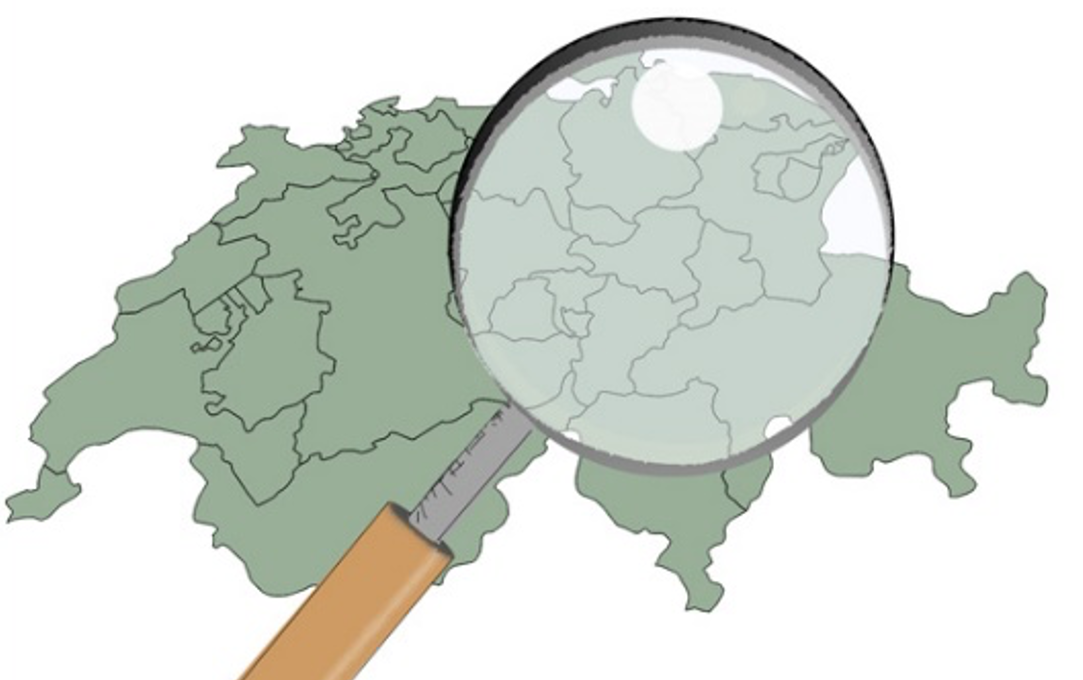
Climate scenarios for Swiss cantons now available!
The current CH2018 climate scenarios show where and how climate change affects Switzerland and what global mitigation efforts can do about it. This information is now also available on a cantonal level as a new CH2018 product. external pageFactsheetscall_made summarise information on past climate change and expected future changes for each canton. Many other figures on different emission scenarios, time periods and variables at cantonal level are now interactively displayed in the extended external pageCH2018 web atlascall_madeand are available for download.
The factsheets are a measure of the action plan 2020 - 2025 for adaptation to climate change and have been produced within the framework of the National Centre for Climate Services (NCCS) under the lead of MeteoSwiss. They serve as a guide and central source of information for cantons to ensure a consistent use of the CH2018 climate scenarios and to support them in setting up their adaptation strategies.
New collaboration with Swiss Data Science on machine learning for improving and accelerating sub-grid scale parameterizations.
Guillaume Bertoli, Firat Özdemir, Eniko Szekely, Fernando Perez Cruz and Sebastian Schemm
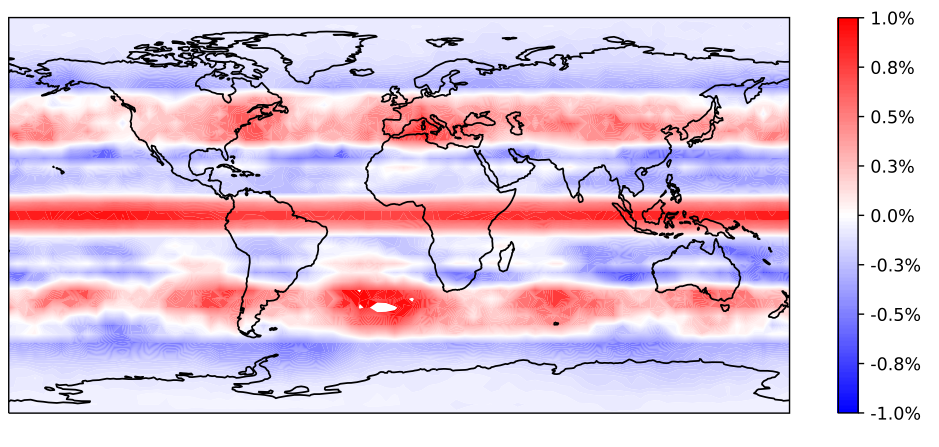
The Atmospheric Circulation Group and the external pageSwiss Data Science Centercall_made have begun a collaboration to use machine learning (ML) methods to significantly accelerate the radiative transfer computation in ICON. Guillaume Bertoli, Firat Özdemir, and Eniko Szekely have started the development of a physically-informed radiative transfer algorithm for ICON, which aims at accelerating a radiation code developed at the European Centre for Medium Range Weather Forecasts (ECMWF). More specifically, the project aims to develop an ML-based algorithm that uses ecRad, which continues to explicitly compute radiative transfer, but only at a reduced number of locations and times and thereby helps to constrain the ML method while reducing the computational cost. Combining the statistics with the physics is a promising way to avoid undesirable climate trends that have occurred with previous ML-based algorithms. Preliminary results show that the ensemble learning method “random forests” outperforms neural networks so far. The emulation is very good below 100 hPa, but the quality of the prediction decreases rapidly at higher altitudes (<1hPa). Next steps include training in Fourier space to make the ML model mesh independent and validation in global warming scenarios.
A new meteorological forcing data set for climate impact modelling at high resolution.
Dirk N. Karger (WSL), Niklaus E. Zimmermann (WSL)
To support the Inter-Sectoral Impact Model Intercomparison Project (ISIMIP), the WSL together with input from the Potsdam Institute for Climate Impact Research (PIK) developed the CHELSA-W5E5 v1.0 dataset. This global, daily, dataset was created at a ~1km spatial resolution to serve as observational climate input data for impact assessments carried out in phase 3a of the Inter-Sectoral Impact Model Intercomparison Project (ISIMIP3a). Version 1.0 of the CHELSA-W5E5 dataset covers the entire globe at 30 arcsec horizontal and daily temporal resolution from 1979 to 2016. It is currently extended to cover more recent time periods up to 2019. CHELSA-W5E5 v1.0 is a downscaled version of the W5E5 v1.0 dataset, where the downscaling is performed using the CHELSA v2.0 algorithm. The CHELSA-W5E5 data set includes a limited set of climatic variables important for climate impact studies in several sectors. Variables included are Daily Mean Precipitation, Daily Mean Surface Downwelling Shortwave Radiation, Daily Mean Near-Surface Air Temperature, Daily Maximum Near Surface Air Temperature, Daily Minimum Near Surface Air Temperature.
The dataset is hosted on the ISIMIP repository fully open access and consists of ~14 TB of monthly NetCDF files. The ISIMIP repository features a function that allows downloading data only for specific geographic areas, for local studies.
Dirk N. Karger, Stefan Lange, Chantal Hari, Christopher P. O. Reyer, Niklaus E. Zimmermann (2021): CHELSA-W5E5 v1.0: W5E5 v1.0 downscaled with CHELSA v2.0. ISIMIP Repository. external pagehttps://doi.org/10.48364/ISIMIP.836809call_made
Selected press articles
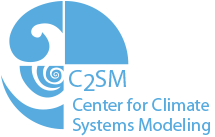
- Science, external pageGlasgow pact leaves 1.5°C goal on life support,call_made Prof. Sonia Seneviratne, 19.11.2021
- SRF 1, 10 vor 10: external pageCOP26 in Glasgow: Bilanz der Klimakonferenzcall_made, Prof. Reto Knutti, Prof. Sonia Seneviratne, 12.11.2021
- Luzerner Zeitung: external pageIn Deutschland wird der ETH-Solartreibstoff marktreifcall_made, Prof. Aldo Steinfeld, Prof. Anthony Patt, 09.11.2021
- SRF 1, Nano: external pageDie Reparatur der Erdecall_made, Prof. Ulrike Lohmann, 02.11.2021
- Welt.de: external pageWie Überfischung den Klimawandel beeinflusstcall_made, Prof. Nicolas Gruber, 15.10.2021
Highlighted Papers from the C2SM Community
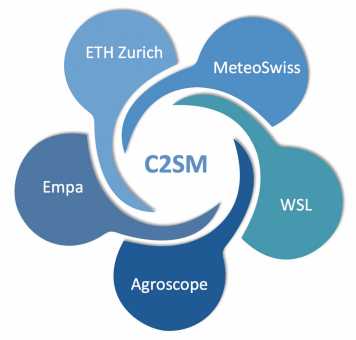
Paper: Identification of seasonal climate extremes in ERA-Interim and CESM-LENS
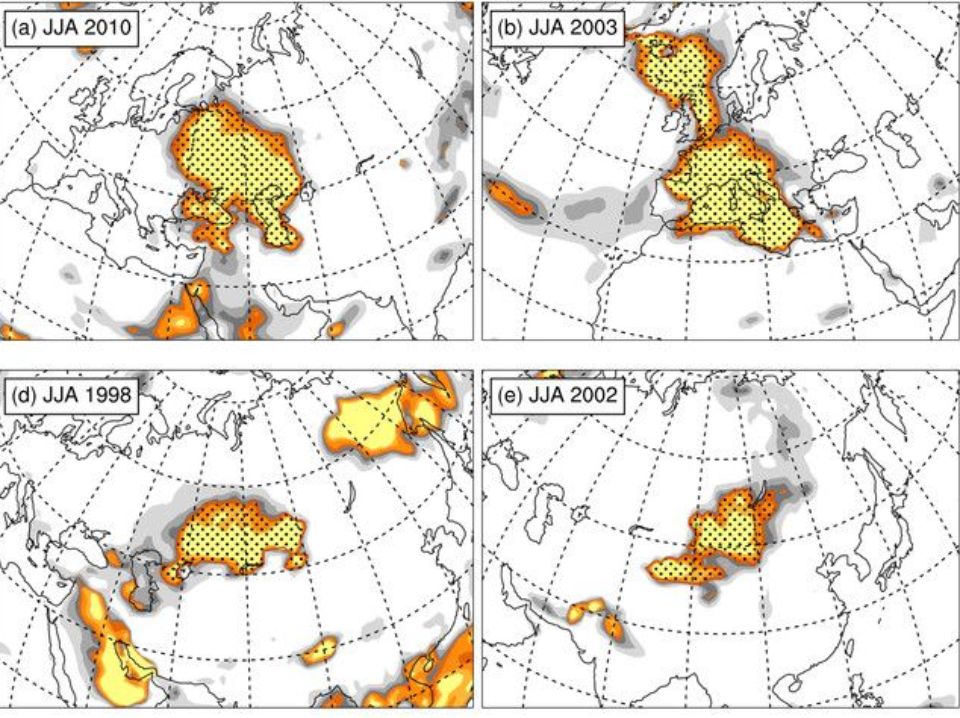
Climatic extremes on the seasonal time scale are societally relevant and understanding their underlying physical processes is challenging. In this conceptual study, a pragmatic approach to pool seasonal extremes across space is developed and applied to investigate hot summers and cold winters in ERA-Interim and the Community Earth System Model Large Ensemble (CESM-LENS). We identify spatial extreme season objects as contiguous regions of extreme seasonal mean temperatures based on statistical modelling. Regional pooling of extreme season objects in CESM-LENS then yields considerable samples of analogs to even the most extreme ERA-Interim events. This approach offers numerous opportunities for systematically analysing large samples of extreme seasons, and several such analyses are illustrated in the paper. For instance, we reveal a striking co-occurrence of El Niño to La Niña transitions and the largest ERA-Interim midlatitude extreme summer events.
Röthlisberger, M., M. Hermann, C. Frei, F. Lehner, E. M. Fischer, R. Knutti, and H. Wernli, 2021. A new framework for identifying and investigating seasonal climate extremes. J. Climate, 34, 7761–7782. DOI: external pagehttps://doi.org/10.1175/JCLI-D-20-0953.1call_made
Paper: Global warming and population change both heighten future risk of human displacement due to river floods
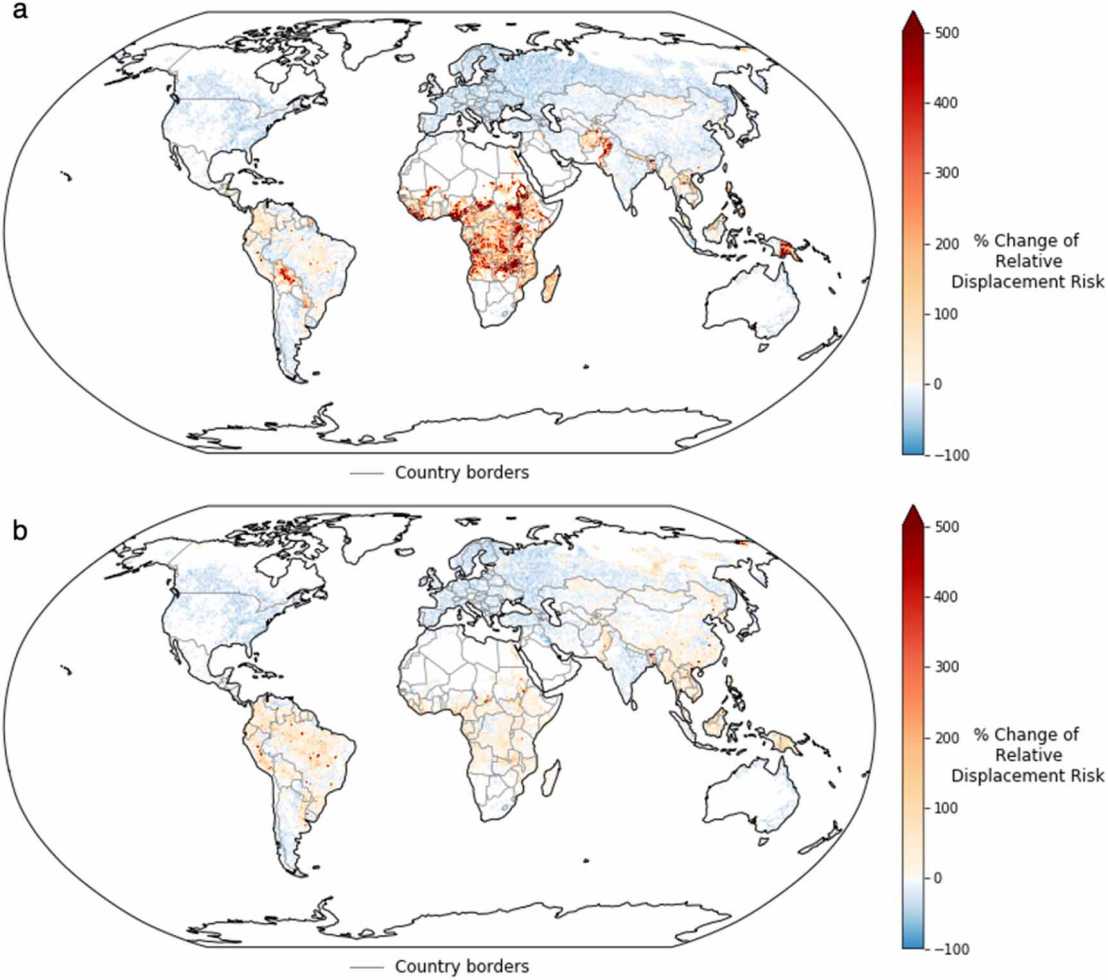
Every year, millions of people around the world are being displaced from their homes due to climate-related disasters. River flooding is responsible for a large part of this displacement. Previous studies have shown that river flood risk is expected to change as a result of global warming and its effects on the hydrological cycle. At the same time, future scenarios of socio-economic development imply substantial population increases in many of the areas that presently experience disaster-induced displacement. Here we show that both global warming and population change are projected to lead to substantial increases in flood-induced displacement risk over the coming decades. We use a global climate-hydrology-inundation modelling chain, including multiple alternative climate and hydrological models, to quantify the effect of global warming on displacement risk assuming either current or projected future population distributions. Keeping population fixed at present levels, we find roughly a 50% increase in global displacement risk for every degree of global warming. Adding projected population changes further exacerbates these increases globally and in most world regions, with the relative global flood displacement risk is increasing by roughly 350% at the end of the 21st century, compared to an increase of 150% without the contribution of population change. While the resolution of the global models is limited, the effect of global warming is robust across greenhouse gas concentration scenarios, climate models and hydrological models. These findings indicate a need for rapid action on both climate mitigation and adaptation agendas in order to reduce future risks to vulnerable populations.
Kam, P. M., Aznar-Siguan, G., Schewe, J., Milano, L., Ginnetti, J., Willner, S., McCaughey, J., and Bresch, D., N., 2021: Global warming and population change both heighten future risk of human displacement due to river floods. Environ. Res. Lett. 16, 044026.
DOI: external pagehttps://doi.org/10.1088/1748-9326/abd26ccall_made

